I recently spent 2 weeks exploring Italy and absolutely loved it. I find Italy so diverse. I had previously been to Florence, Verona and Venice, all of which have completely different vibes and things to offer and are so beautiful in their own rights. This trip was spent exploring the Western coast of Italy. I actually did this as part of an Intrepid tour called ‘Rome to Amalfi’ which went for 7 days. I can highly recommend Intrepid and really enjoyed this experience. However, for the purpose of this post, I will summarise each location from a highlights and useful tip point of view rather than info specifically about the tour. I can do that separately if you wish, just let me know. I have also added some information about my time on Ischia at the end. This was on my own accord, but is within the same area of Italy, so thought I would add it here too.
Rome
I arrived into Rome Fiumicino Airport, a major European travel hub. My flight landed mid-afternoon and I had a relatively quick exit out of the airport. My accomodation was located about a 5 minute walk from Rome’s major Termini station, so my two best options for getting to town where train or coach. As I was in no rush, I opted for the cheaper and slightly longer coach ride. The coach was air-conditioned, a welcome delight after going from 5 degrees to 35 degrees and high humidity and it had wifi and the cost was 7 euro, half the price of the train trip into Termini. There were about 3-4 coach companies to choose from and all you need to do is purchase a ticket at one of the various ticket windows at the airport and get on your chosen coach. The trip was about 40 minutes into town. The alternative is the train which is around 14 euro each way. If you were staying away from the Termini, perhaps a private car or an alternative route on public transport would suit better.
Accomodation
My first night I stayed at Hotel Villa Delle Rose, a little three star hotel centrally located. It was clean and perfect for what I needed.
My second night (and the first night of the tour) I stayed at Hotel Stella. This accomodation was organised by Intrepid and again was a little three star centrally located hotel.
Both hotels were about 5 minutes walk from one another which made changing very easy.
To do
Rome is definitely a great place to see on foot. There is so much history and many of the sites are not accessible by vehicles. I chose to do the New Rome Free Walking Tour, which went for 2 hours and essentially, you just pay what you wish at the end. We covered a lot of Rome and the guide was fantastic. Remember, when touring around Rome and Italy in general, if you want to enter Churches and other sacred sights it is a sign of respect to be covered to your knees and have your shoulders covered too.
Sights to see include: the Colosseum, the Forum, Via Condotti, Piazza Navona, the Spanish Steps, Piazza Venezia, the Pantheon, the Trevi Fountain, the Vatican City and St Peter’s Basilica.
Food: A highlight for me was the FataMorgana Gelato and just all the Italian food in general. Many places around Rome now offer gluten free options for pizza and pasta, which makes it even better.
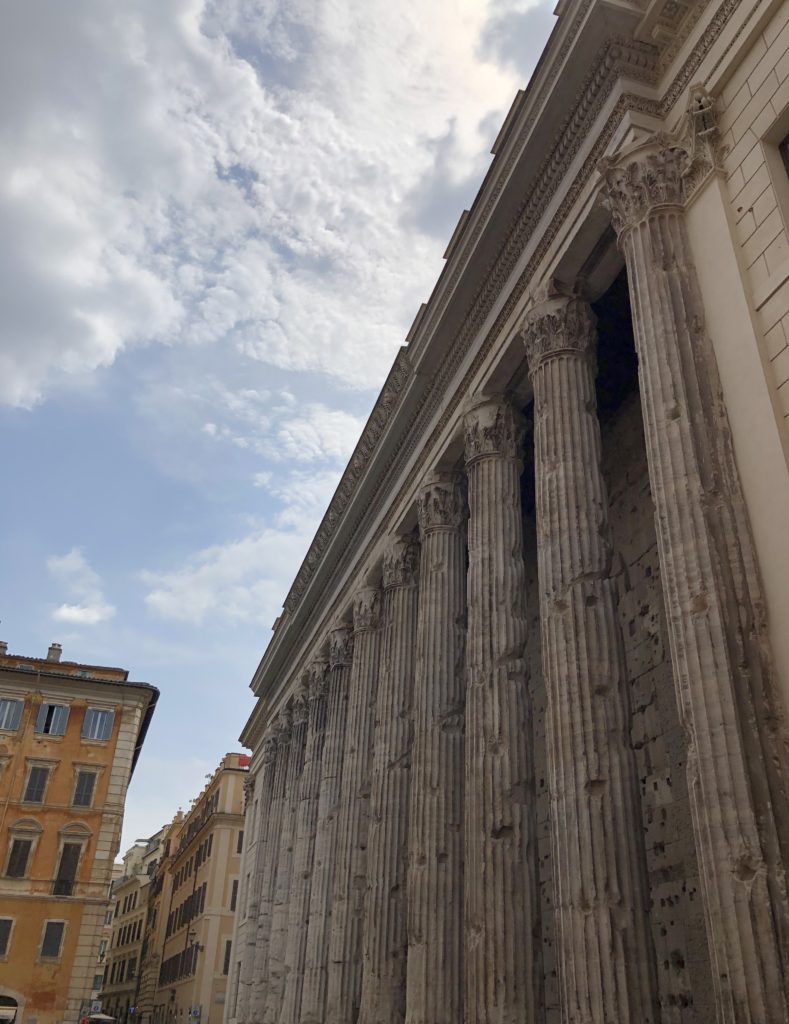
Naples
We travelled by train to Naples from Rome. As it was a tour, and the logistics were organised for me, I can’t remember the company name or cost, but the train was a bullet train and took 60-90 minutes to Naples.
Naples has a different vibe to Rome. It’s evocative and many parts of it are World Heritage Listed. We spent the afternoon here only.
To do
We did a tour of the Napoli Sotterranea Underground City, a famous underground city full of history and stories. The other major place to visit is the Duomo, which was actually closed for a funeral when I was there, so I didn’t get to go in.
Food: Naples is the birthplace of pizza, so it is fabulous opportunity to get your hands on a traditional Napoli pizza whilst in the area. We went to a place called Pizzeria dal Presidente and I had the best gluten-free pizza of my life. Note, the Italian’s traditionally order one pizza per person and they only serve it sliced for children. The traditional way to eat a pizza is to cut away a portion, fold it over and eat it.

Pompeii
We took another train from to Pompeii from Naples, which has around 60 minutes in length. I really was surprised by Pompeii, it was such a picturesque little city located in the shadow of Mt Vesuvius. It has a lovely old town square, with the most stunning Church and bell tower next to it. As someone who isn’t into history all so much, I really enjoyed visiting the ancient archeological ruins whilst here and learnt a lot!
Accommodation
We spent 2 nights in Pompeii, staying across the road from Pompeii’s main archeological ruin site at a hotel called Hotel del Sole. This was a 4 star hotel that had really spacious, light and clean rooms and a great breakfast. The location was fantastic and there were many good places to eat nearby.
To do
We spent a good 3-4 hours within Pompeii’s world famous archeological site and were assisted by a local guide whose knowledge of this facet of time was unbelievable. I recommend spending a bit of extra money getting a local tour guide rather than relying on the pre-recorded headphone sets as you get so much more from the tour. Again, as this was organised by Intrepid, I don’t have the finer details, but you get the gist.
We also visited and climbed to the top of Mt Vesuvius, one of the worlds most famous and dangerous active volcanoes. We had private transportation up to the start of the walk, but it is likely accessible by taxi or local bus (although I haven’t done my research). The walk up Mt Vesuvius takes anywhere from 20 minutes to 60 minutes depending on your fitness level. It is quite steep and the ground is quite loose and rocky so some people choose to walk with a stick or some poles. The walk itself provides for some great views of the Bay of Naples and beyond. At the top of Vesuvius, there are some guides that can give you a run down on the volcano, which has a very interesting story.
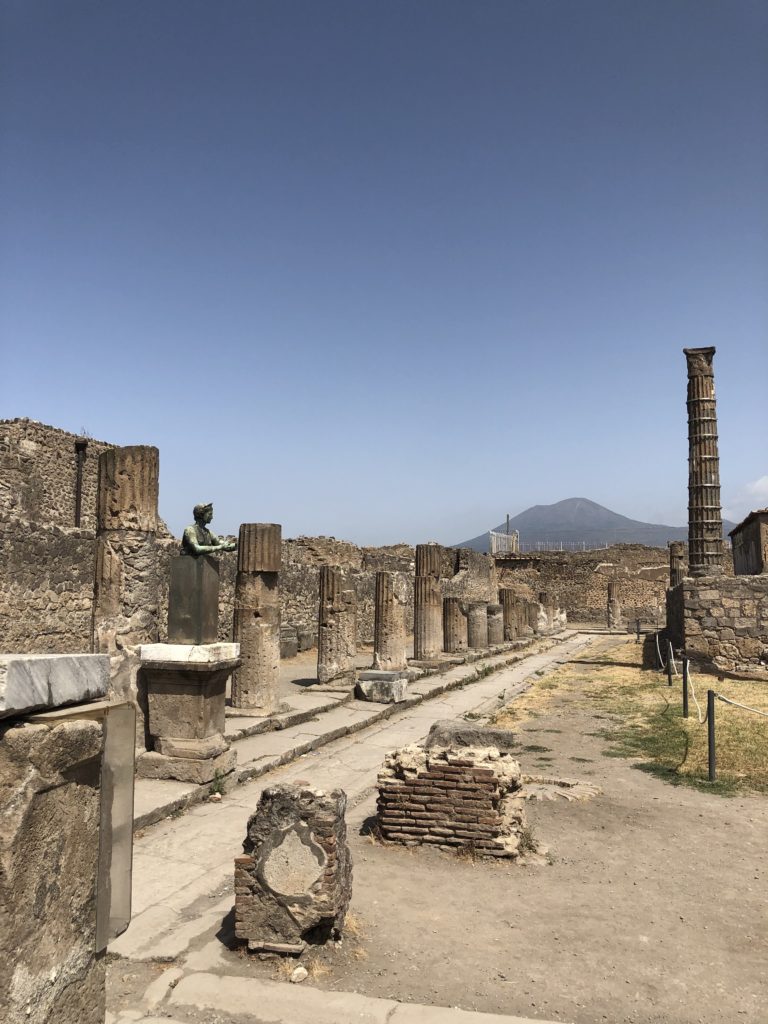
Sorrento
Sorrento would have to be one of my favourite places we visited. I actually went back for a night once the tour ended.
Accomodation
On the tour we stayed at Hotel del Corso. The best thing about this hotel was the location. It was so centrally located to everything. The rooms were clean and modern. They charged 3 euro per device for wifi and breakfast was not included, which seemed to be the norm for many places in Sorrento.
When I came back the second time I stayed at Hotel Rivage, which was at the end of the walking strip, whereas Hotel del Corso was in the middle. Again, a really nice and modern hotel with brilliant facilities, including a pool. Hotel Rivage also included breakfast, which had good variety.
To do
We did a gelato class at David Gelataria. David was so wonderful and knowledgable in the art of gelato making. We made a lemon sorbet, and it was the best I ever did taste!
Sorrento is the home of lemons so wherever you go they serve Limoncello and lemon flavoured sweets and fresh lemon juice. We also did a limoncello class and a lemon tour with Luigi at Il Giardino di Vigliano, which was just fantastic. This is a family owned and run farmhouse, just a few kilometres out of Sorrento and was such a special and authentic experience.
They’re not big on sandy beaches in Sorrento, favouring more wooden or stone bathing platforms on the local small beaches which lie beneath the cliffs of the main town. Nevertheless, after a hot day a stroll along the marina and a dip in the ocean were definitely a fabulous addition.
I really enjoyed exploring Sorrento itself. It has a lot to offer for all ages and if you get tired and want to have a rest, I recommend getting an Aperol spritz either down by the water or in in the main square and watching the world go by.
We also took a private boat on a day trip to Capri, which was really special. Capri has a dramatic coastline dotted with natural grottoes, local farmland, authentic Italian huts and villages, citrus groves and more. The main town of Capri is pretty swanky and offers many luxury accomodation options and chic cafes and shopping opportunities. The colour of the water was something else. I was actually surprised how clean it was, considering the amount of boat traffic the area must get. Our boat did a round-trip of the island over the day, stopping for the finale at the famous blue grotto, which was really pretty amazing!
Food: A highlight in Sorrento was Trattoria Da Emilia Dal 1947, a little seafood restaurant down at the marina grande. I had the seafood antipasto and a tomato salad and it was just. the. best. They don’t take bookings though, so you do have to go early.
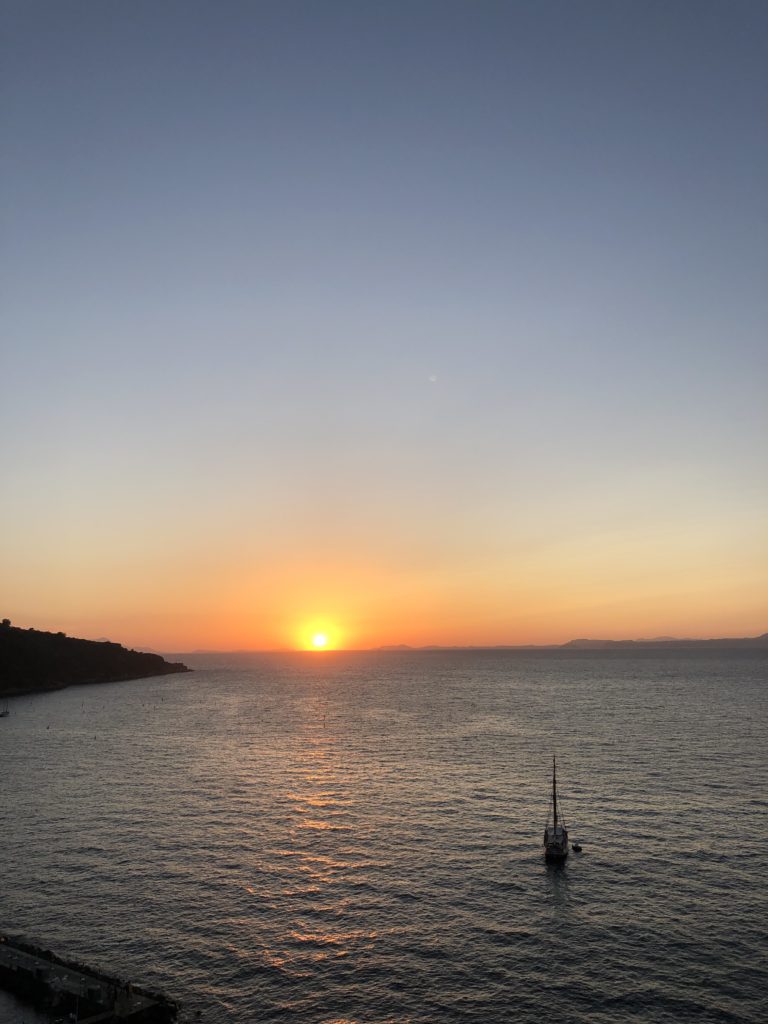
Amalfi/Positano
The Amalfi Peninsula is so stunning. It is full of rocky outcrops, cliff-top villas, the most amazing blue seas, citrus groves, bright skies and authentic villages.
Accommodation
We stayed at Hotel Fontana, another brilliant placed 3 star hotel in the heart of the square of Amalfi. The room was surprisingly large. It had 2 x queen beds and 3 x singles for 2 people! I can highly recommend this hotel for its cleanliness and location.
To do
Amalfi town is pretty small, but so authentic and picturesque. We used Amalfi as a base for a for days to explore places nearby.
Atrani is a town about 10 minutes walk from Amalfi town. You can get there via road or there is a tunnel that you can take. Atrani is very small, but it is lovely. I had dinner there on the water and like many places along the coast, the specialty is seafood.
When I was in Amalfi I also took the lift up to the cemetery where you get views that go for miles. The lift is located within the same tunnel that you can use to walk to Atrani.
The Path of the God’s Walk was an absolute highlight of mine. I love walking and this path was certainly spectacular! You take a local bus from Amalfi town up to the top of the cliffs. It leaves at 8am or around 10.30am and you can buy tickets at the local tabacchi. As it was hot and humid, we wanted to get an early start so took the early bus. The bus takes around 1 hour and is very windy, so if you’re prone to travel sickness, come prepared. The walk itself wind its way through scenic landscapes and unrivalled views along the coast and you’ll pass the off farmer working the land or the odd mule wandering by. The trail is around 11km and takes around 2-3 hours, depending on level of fitness, and ends in Nocelle, near Positano, where you can choose to take a local bus into Positano town for a couple of euro or walk down 1700 stone steps into town – I chose the steps, whilst a good leg workout, my calves were against me for the next few days! We were only in Positano for half a day, but it is a place I would definitely like to go back to. The beach was nice, more sandy than stone, and the town was like postcard.
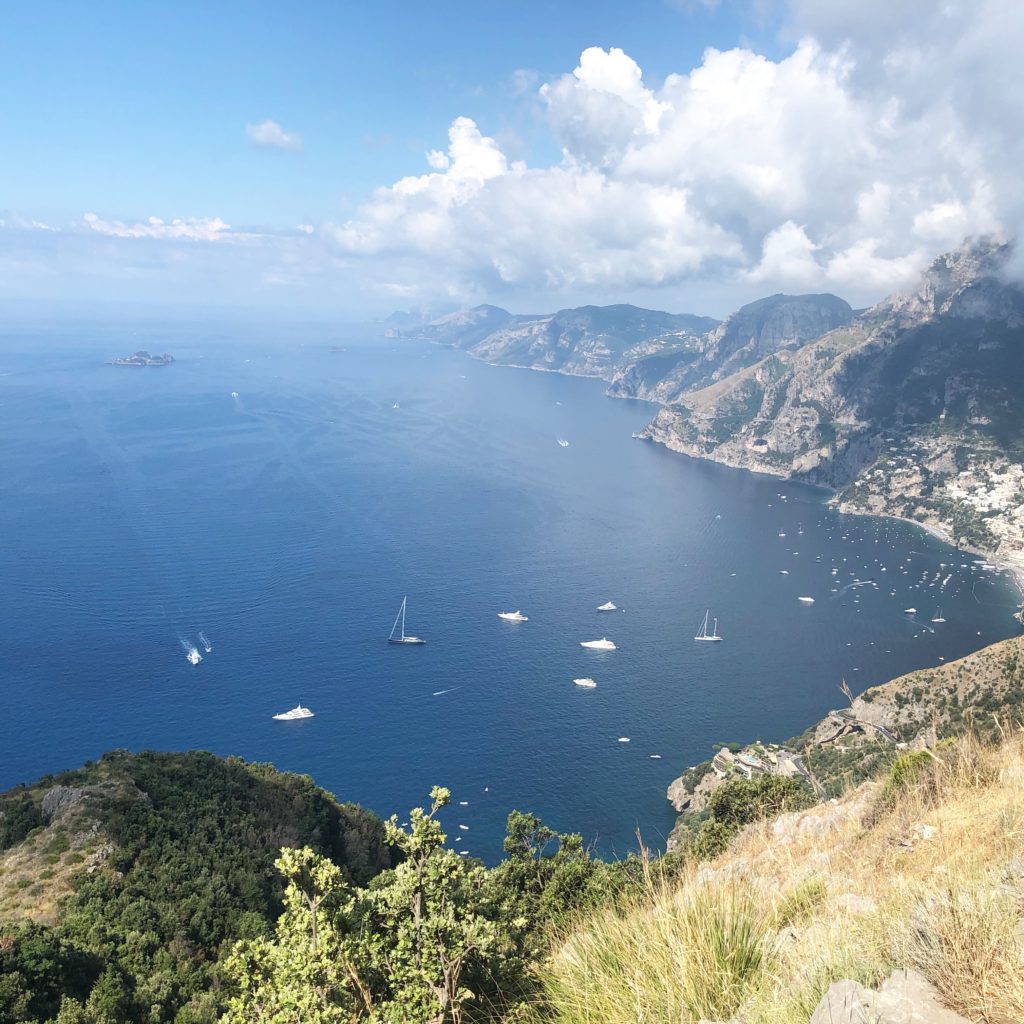
Ischia
I also spent 3 days on Ischia, a volcanic island in the Gulf of Naples. It is best known for its thermal waters which are full of nourishing minerals. I liken it to a larger but lesser-known and more authentic Capri. It has such a laid-back vibe and was the perfect place to spend 3 simple days with a mixture of explore-mode and relax-mode. There are several parts to the island; Ischia Porto, Forio, Lacco Ameno, Serrara Fontana and more.
Ischia is about 1 hour from Naples on the ferry. Once you have arrived on the island you will need transport to get around. The top 3 options are renting a scooter, taking a taxi or catching the local buses. I chose the latter option and for 14.50 euro got a weekly bus pass, which meant ‘hakuna matata’ for me with transport. Their bus system is really easy to navigate; they have 2 main routes – CS and CD. The CS (Circolo Sinistro or Left Circle) circles the island anticlockwise, and the CD line (Circolo Destro or Right Circle) circles in a clockwise direction. Each passes through each town and depart every 15 to 30 minutes from the main port. The bus drivers were all very friendly and although, spoke limited english, were always happy to help where they could.
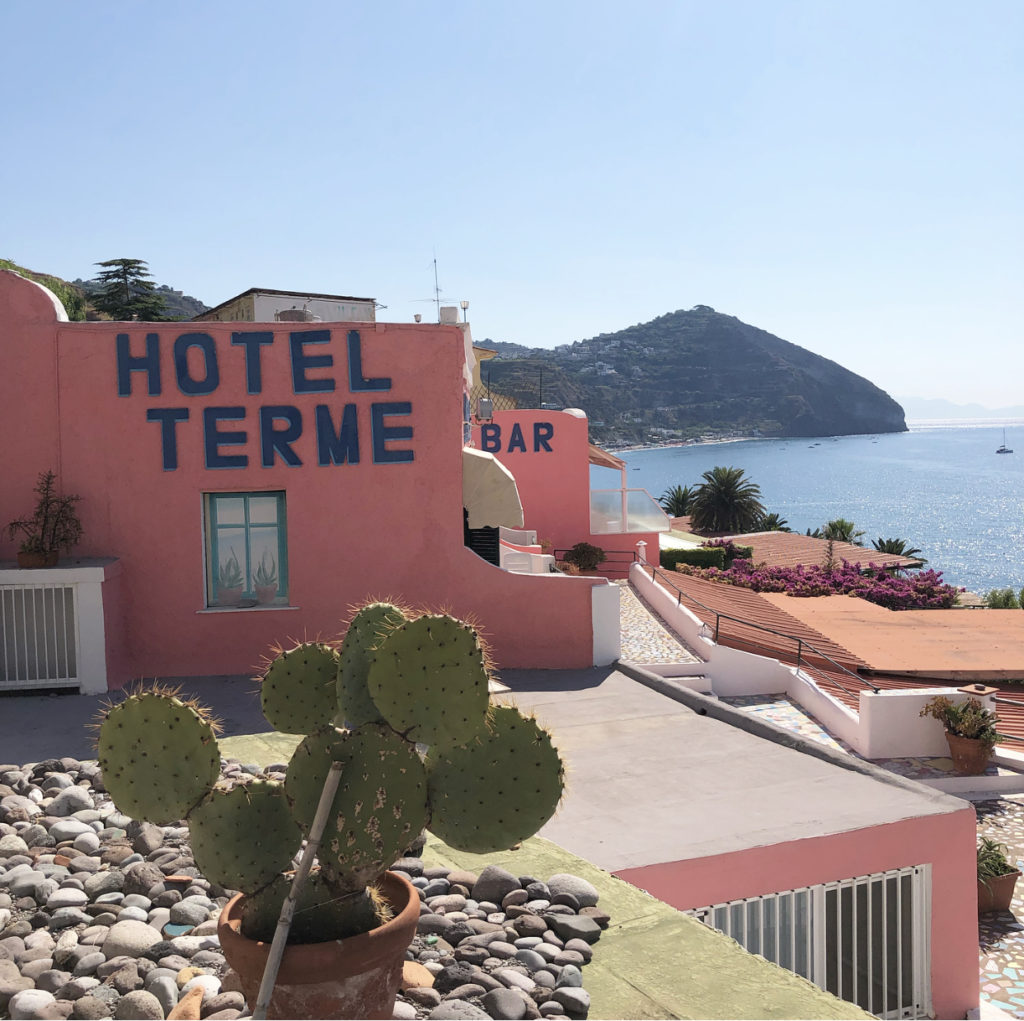
Accommodation
As a beach-lover, I chose to stay in Forio at a 3 star hotel called Hotel Capizzo which was ideally located about 20 minutes on the bus from the port and about a 5 minute walk to the beach. Vincenzo was the hotel manager was absolutely fantastic in ensuring my stay was hassle free. Getting into Forio was easy on the bus 5-10 minutes or around a 30 minute walk along the coast.
To do
There are many things to do on this beautiful and I really only probably touched the surface of it.
The Giardini La Mortella is a world-famous garden in Forio developed by Lady Susana Walton and her husband, British composer William Walton. The gardens feature plants and features from around the world and have been designed with much love and thought. I even spotted Western Australian plants in there. The views from some of the lookout points provide unrivalled views of Forio and beyond. There is also a cute little cafe where you can stop for a coffee and a piece of cake.
Each day I went to a different part of the island to explore; the first day I explored Forio and it’s back streets, the second day I explored the port and the third I visited Sant’Angelo, which was definitely my most favourite part of the island. Sant’Angelo was a slightly more upmarket yet quieter area, but the town was so quaint and picturesque and the views were out to the horizon and ever so spectacular.
Citara Beach in Forio was my local haunt and is one of the largest and most popular beaches on the island. It is a sandy beach surrounded by mountains and views as far as the eye can see. Parts of the beach are owned by the beachside restaurants/bars where you’ll have to purchase a deck chair and umbrella in order to use them.
If I went back to Ischia, I would walk to the summit of Monte Epomeo as well as spend a day at one of the thermal resorts such as Giardini Poseidon Terme. Other highlights include Aragonese Castle and Procida, a small yet charming island neighbouring Ischia with the most brilliantly colourful houses.
Extra Notes
The evenings are so long during an Italian summer and it is light until 10pm. The Italians are still at the beach until 7/7.30pm. There is ample opportunity for a slower evening and a sunset drink.
The ferries and hydrofoils are probably the best way to get around in this area. The roads are very windy and if you’re prone to travel sickness, can be a hard slog! Ferries come very regularly and service many of the main ports within the coastal area. Private transfers are an option too, especially if you’re part of a larger group, where you can share the cost, but do your research to ensure a good deal at a good price.
Many of the beach areas along this coast, Ischia included, require you to pay for a deckchair and umbrella is using. If you’re not interested, just find a patch of sand on the ‘free beach’, which is what I did mostly.
The roads in this part of Italy are really quite windy, so if you’re prone to travel sickness remember to take something with you.
Tipping isn’t essential in this area. If you feel like you had brilliant service, by all means leave a tip, but it didn’t seem to be standard practice, so don’t stress too much.
The food everywhere is amazing. Seafood is the speciality, but pizza and pasta and your usual Italian fare are always good choices too. I found it relatively easy being gluten-free and stocked up on things like nuts, fruit and rice cakes for breakfast at local supermarkets when I could.
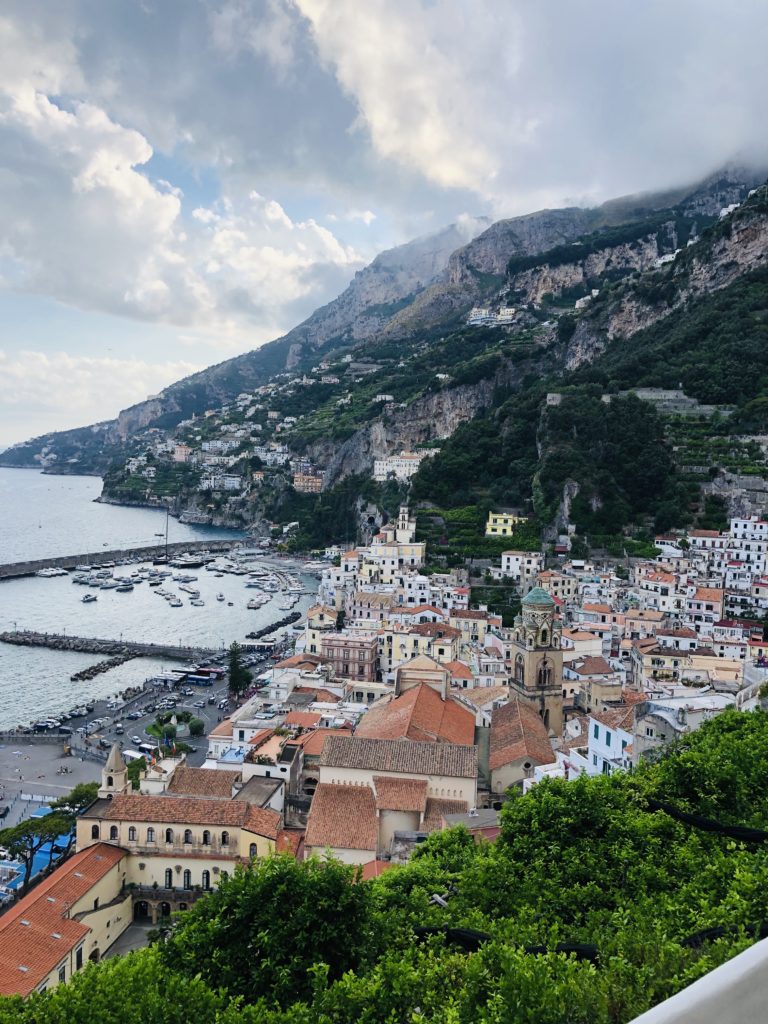
Have you been to these parts of Italy? Feel free to feedback your favourite parts and/or share this article with someone you know travelling soon.
